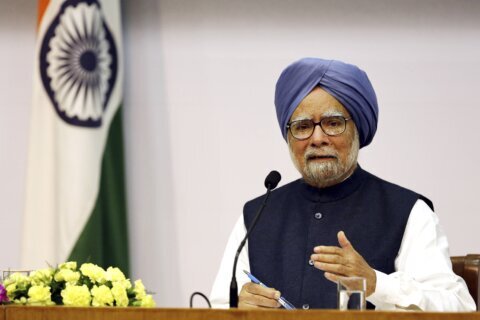How much does cable cost per month? So much that it could be more than your electric, natural gas, water and trash service combined, according to a report from Allconnect, a website that lets users compare TV and internet providers.
Using data from a variety of public sources, the site found the average monthly cable package is now $217.42 per month. That’s more than the average household’s monthly cost of $205.50 for all other major utilities combined.
However, that cable bill might be for more than simply television. Cable companies may advertise one price for service and then tack on broadcast fees, cable box rentals or other costs that can easily add $50 or more to a monthly bill. Another common strategy is to upsell bundled service packages which make it difficult to understand exactly how much is being spent on cable television itself.
Keep reading to learn more about the average cable cost per month, how to avoid overpaying and get the best deal and when to cancel cable altogether.
[READ: Fun Things to Do in Your Free Time That Cost Nothing]
Average Cost of Cable Per Month
Because of factors such as promotional pricing and bundled services, it can be hard to answer the question, “How much is cable a month?”
The most official answer can be found with the Federal Communications Commission, which has traditionally published a biennial Report on Cable Industry Prices. Unfortunately, this report hasn’t been updated since 2018. At that time, it found cable companies were charging the following average prices:
— Basic service: $25.40 per month
— Expanded basic service: $71.37 per month
The report also looked at the cost of direct broadcast satellite TV. It found the plans most comparable to expanded basic cable service were $70.95 per month from DirecTV and $64.99 from Dish Network.
More recent data is available from cable and internet comparison website CableTV.com. It analyzed 381 TV packages from 15 providers for a 2022 report. It found that TV-only service can range in price from $20 to $149.99 per month with an average cost of $78.58 per month.
How Much Is a Month of Bundled Services?
Many people buy their service as part of a bundled package, rather than a standalone cable plan, so knowing average package pricing may be more helpful than the cost of TV-only service.
CableTV.com found the following average prices for bundled plans:
— TV and internet: $129.05 per month
— TV, internet and phone: $144.95 per month
Other recent data is available from the bill payment service Doxo. Its U.S. Cable & Internet Market Size and Household Spending Report 2021 from doxoInsights reports 82% of U.S. households have a cable and internet bill, and they pay an average of $116 per month. The report also notes significant regional differences with residents of the least expensive state, South Dakota, paying an average of $92 per month while average costs in the most expensive state, Alaska, are $148 per month.
[READ: How to Estimate Your Utility Costs.]
How to Avoid Overpaying for Cable
Although cable can be more than other household bills, it may be worthwhile for families who regularly watch television. However, you don’t want to pay more than you have to.
“Cable bills notoriously keep creeping up every six months to a year,” says money-saving expert and U.S. News contributor Andrea Woroch. “If your bill is drastically more than when you first signed up, you may need to reconsider if it’s worth it.”
Shopping websites such as Allconnect and CableTV.com are one place to compare prices and see how your rate compares to that from other providers. Don’t assume you need to keep your current level of service though.
“Ask yourself what you’re watching and how much you’re watching,” Woroch advises.
If you find that you don’t often watch cable channels, you may be able to downsize to a basic package or even eliminate cable altogether in favor of streaming services or over-the-air broadcast channels. “If you want basic channels, you can get a HD antenna for $40 to $60 and get local channels for free,” Woroch notes.
Save Money on Cable Costs
Cable companies often reel in new customers with promotional pricing. After that first year, though, the price can quickly climb. To save money, simply call and ask for a promotional rate.
“I’m always asking to see what type of promotion they can put on my package,” says Bob Chitrathorn, chief financial officer and vice president of wealth planning at Simplified Wealth Management in Corona, California. “Ten years I’ve been doing this, and I always get a discount.” He’s been able to save as much as $75 a month and currently pays $99.07 monthly for a package that includes premium cable channels and high-speed internet.
Many companies expect this type of negotiation and are prepared to be flexible on pricing to maintain an existing customer. They often have loyalty or retention representatives who are authorized to reduce rates for those who may be on the verge of canceling.
Another way to save money is to avoid paying for bundled services you don’t need. Companies are adept at convincing customers to add items such as landlines or premium channels in exchange for saving money off the individual price of services.
Chitrathorn says cable box rental fees can also be a place to save. For households that have multiple cable boxes, these fees can quickly add up. One way to cuts costs may be to offer to pay the rental fee on one box if the company will waive the fee for the others.
“They want you to have that equipment,” Chitrathorn says. And since technology is often being updated, cable companies may not reuse boxes that are returned. As a result, they may prefer to waive the fee and keep the devices in customers’ hands, according to Chitrathorn.
For those who don’t want to haggle over prices, services such as BillFixers and Truebill will negotiate on behalf of customers in return for a share of the savings.
[READ: Is Another Recession Coming in the U.S.? Watch for These Warning Signs.]
Should You Cancel Cable and Stream Instead?
Of course, the best way to save money on cable is to eliminate it altogether. With today’s streaming services, it’s never been easier to cut the cable cord, but you could find you are only swapping one expense for another.
“On streaming, there is a lot of choice,” says Jon Cohen, senior vice president of business development and distribution for Frequency, a leading platform for the creation of free ad-supported TV.
The risk with all that choice is that signing up for multiple services can quickly add up to cost as much as a traditional cable package. In fact, some streaming services that include live television programming such as news and sports can be just as much as cable on their own. For instance, YouTubeTV, which includes more than 85 channels, has a regular monthly price of $64.99.
“What you see is that streaming is starting to look like cable,” Cohen says. As streaming services expand their programming, he adds that “it’s a battle for minutes.” With only so many hours in the day to watch television, people will need to decide where their entertainment dollars are best spent.
Free ad-supported TV, known as FAST, may be one answer for cash-strapped families. Many companies are launching free services and channels to help them tap into a new audience. For instance, Paramount has Pluto TV and Fox operates Tubi. FAST channels may be automatically included on some smart TVs or accessed through an app.
You won’t get everything through FAST channels — “Premium sports will always be behind some paywall,” Cohen says — but there is a diverse mix of movies, television shows and even local news that can be accessed for free through this streaming content.
In the end, streaming can be cheaper than cable, but it all depends on what you want to watch. If you need premium content, you may need to pay premium prices.
More from U.S. News
Ways to Live Green on a Budget
12 Shopping Tricks to Keep You Under Budget
How to Save Money When Grocery Shopping on a Budget
How Much Is Cable Per Month? originally appeared on usnews.com
Update 07/21/22: This story was previously published at an earlier date and has been updated with new information.







